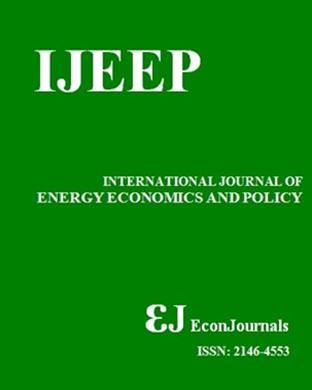Asymmetric Relationship between Oil Prices, Agricultural Production, and Industrial Production in Kazakhstan: Application of the NARDL Method
DOI:
https://doi.org/10.32479/ijeep.19731Keywords:
Kazakhstan, Oil Price, Agricultural Production, Industrial Production, NARDL, Wald TestAbstract
Two important factors contributing to oil revenues in Kazakhstan are the agricultural and industrial production sectors. This study examines the asymmetric effects of variability in these sectors on oil revenues. The analysis was conducted using the Nonlinear Autoregressive Distributed Lags (NARDL) model. In this model, oil revenues are represented as a ratio of oil revenues to GDP, while industrial and agricultural productions are represented by the industrial production index and the agricultural production index, respectively. The asymmetric effect refers to the differing impacts that positive or negative shocks in industrial or agricultural production have on oil revenues. Using annual data from 1992 to 2023, the study found that industrial production had statistically significant effects on oil revenues in the short term; however, this effect did not persist in the long term. In contrast, agricultural production demonstrated significant effects on oil revenues in both the short and long term, with notable seasonal differences in the impacts of short-term positive and negative shocks. Additionally, the error correction model indicated that both production sectors had asymmetric effects that led to deviations from expected oil revenues. In conclusion, the findings of this research highlight the significant role that production sectors play in explaining fluctuations in oil revenues.Downloads
Downloads
Published
2025-06-25
How to Cite
Baisholanova, K. S., Dauzova, A. M., Kazan, H., Myrzabekkyzy, K., Tazhibayeva, R. M., Sarsenova, A. E., … Nurgabylov, M. (2025). Asymmetric Relationship between Oil Prices, Agricultural Production, and Industrial Production in Kazakhstan: Application of the NARDL Method. International Journal of Energy Economics and Policy, 15(4), 465–471. https://doi.org/10.32479/ijeep.19731
Issue
Section
Articles




